Bye-bye Renoir. I learned this morning that the Sterling and Francine Clark Art Institute is selling Femme cueillant des Fleurs, c 1874. The painting will be offered at the Dickinson booth at Maastricht, Mar. 18-27, with a price tag of $15 million.
I learned this from a Maastricht press release, not as I would have preferred, from the Clark itself.
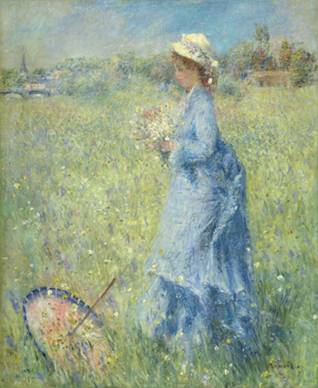 Proceeds, the release says, will be used to strengthen the Clark’s collection (in accordance with the policy of the Association of Art Museum Directors). No violation of the rules…
Proceeds, the release says, will be used to strengthen the Clark’s collection (in accordance with the policy of the Association of Art Museum Directors). No violation of the rules…
Sterling Clark bought this picture from Durand-Ruel in 1933. He loved Renoir. From his first purchase of Renoir’s work in 1916 through the next forty years, Clark and Francine bought and bought. The Clark owns 32 other works by Renoir, certainly one of the biggest concentrations in the U.S.
This is an early Impressionist work, and — though it may seem a bit sugary to some eyes — could well be in demand because it was made jast as Impressionism began to develop.
As the release says,
It also serves as a poignant reminder of a story of fierce jealousy involving Monet’s first and second wives. Camille Doncieux was 18 years old when Monet met her in 1865 and she soon became his lover and was the model for a number of his works in these early years. Monet’s father refused to accept her into the family because of her humble origins but despite this the couple married in 1870.
The lifelong friendship between Monet and Renoir was at its closest between 1866 and 1875 and the two men often painted together, setting up their easels side by side. Camille was depicted in a number of their paintings…from this important period….She is shown standing in a field near St Cloud, outside Paris, clutching a bunch of flowers…A year after Renoir painted this picture, Camille became ill and in 1879 she died aged 32 , her already poor health worsened by the recent birth of her second son Michel.
Monet’s second wife Alice Hoschedé was a jealous woman who destroyed all the material that she could find relating to Camille….It is perhaps appropriate that this fascinating and enigmatic figure in the history of Impressionism is known to us almost entirely through the paintings for which she posed.
As I’ve said before, I think museums should make these disclosures, not the gallery or the fair or the auction house. I also have reservations about selling through dealers, but at least this time it is very public, which is the source of my qualms.
As to whether this particular painting should be sold, I’d like to know more about its exhibition history and to see the other Renoirs in the collection. How important was this one to Sterling Clark? We don’t know.
Photo Credit: Courtesy of TEFAF Maastricht and The Clark

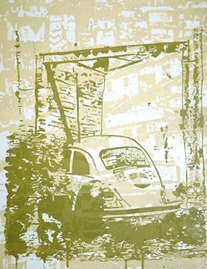
 What’s the point? The museum says the show aims to “have you looking, thinking, talking, voting, and coming back to see the mysteries revealed.”
What’s the point? The museum says the show aims to “have you looking, thinking, talking, voting, and coming back to see the mysteries revealed.”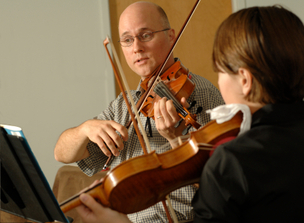

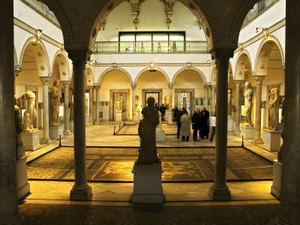
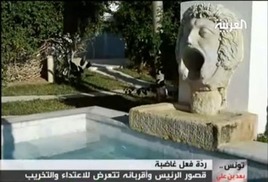
 Given
Given